If you have a baby grand piano, you may have noticed that the sustain pedal wasn’t working properly. Whether it’s because the wire came undone or the pedal itself is damaged, there are ways to fix it without spending a fortune on repairs. In this blog post, we will talk about how to fix sustain pedal on baby grand piano.
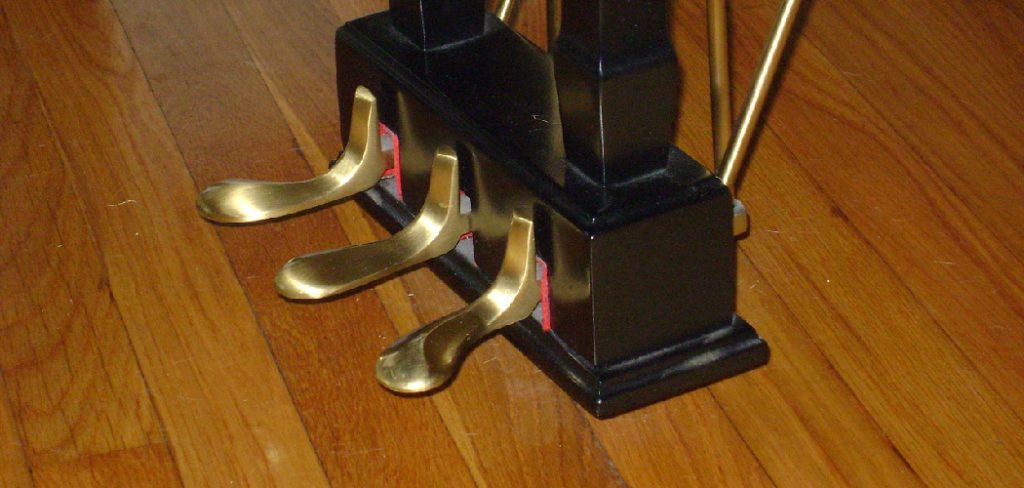
It’s a simple process that only takes a few minutes, and once you’re done, your piano will be up and running like new! So without further ado, let’s get started! First, check to see if the problem is with the pedal or the piano. If the pedal is loose or broken, it will need to be replaced. If the problem is with the piano, you may be able to fix it yourself, or you may need to call a technician. Read on to know more!
Summary: If your baby grand piano’s sustain pedal isn’t working properly, it could be a sign of an underlying mechanical issue. To fix it, start by removing the cover plate to access the internal components. Check the spring connection and alignment of the sustain pedal to make sure they’re functioning as intended. Next, inspect/replace any broken/worn parts such as wires or bushings. Lastly, clean and lubricate all moving parts before re-assembling and testing the sustain pedal.
8 Reasons That Causes Sustain Pedal Issues on Baby Grand Piano
- 1The sustain pedal may have been disconnected or loose from the piano.
- The sustain pedal may be broken or have a mechanical problem.
- The damper pedal linkage may be dirty, rusty, or gummed up and not working properly.
- The damper pedal spring may be weak or broken and not provide enough tension to keep the pedal up.
- The damper pedal arm may be bent or damaged and not provide enough pressure to sustain the pedal.
- The sustain pedal may be too tight and not return properly.
- The piano may need new felt on the damper pedal linkage.
- Something may be sticking in the damper pedal linkage and preventing it from working properly.
10 Ways on How to Fix Sustain Pedal on Baby Grand Piano
1. Check the Cable for Damage
The sustain pedal is attached to the piano with a cable. This cable can become damaged over time, which will prevent the pedal from functioning properly. Unplug the cable from the piano and inspect it for any breaks or tears to check the cable for damage. If you find any damage, you will need to replace the cable.
2. Adjust the Sustain Pedal Spring
If the sustain pedal is not staying down, it may be that the spring is too tight or too loose. To adjust the spring, use a screwdriver to turn the small screws on either side of the pedal until it is adjusted to your liking. Be careful not to overtighten the screws or you may damage the pedal.

3. Clean the Pedal
If your sustain pedal is sticking or not working properly, it may just need a good cleaning. Debris or dirt can build up on the pedal over time and cause it to malfunction. Use a soft cloth to wipe down the pedal and remove any dirt or debris.
4. Lubricate the Pedal
The pedal on your bike occasionally needs to be lubricated with oil to keep it working properly. Just put a small amount of oil on the hinge of the pedal. But be careful not to put too much oil on, because then the pedal can get slippery and be hard to use.
5. Adjust the Pedal
If the bike pedal is not working right, it might be because it is not adjusted properly. To fix this, turn the adjustment screw on the bottom of the pedal with a Phillips head screwdriver. Turn the screw clockwise to make the pedal tighter or counterclockwise to make it looser. Be careful not to overtighten the screw, as this could damage the pedal.
6. Check the Pedal Rod
The pedal rod is a long, thin piece of metal that goes from the pedal to the piano. If it’s bent or damaged, the pedal won’t work properly. To check it, take it out of the piano and look it over for any damage. If you see any, you’ll need to get a new pedal rod.
7. Clean the Connectors
The sustain pedal is a pedal on a piano that keeps the sound going after you press a key. The connectors on the sustain pedal may become dirty over time, preventing them from connecting properly to the piano. To clean the connectors, use a soft cloth to wipe them down and remove any dirt or debris.
8. Apply Vaseline or Wd-40 to the Moving Parts
If the pedal is not moving smoothly, you can lubricate the moving parts by applying a small amount of Vaseline or Wd-40. This will help the pedal to move more easily and reduce the amount of friction. Be sure to wipe away any excess lubricant before using the pedal.
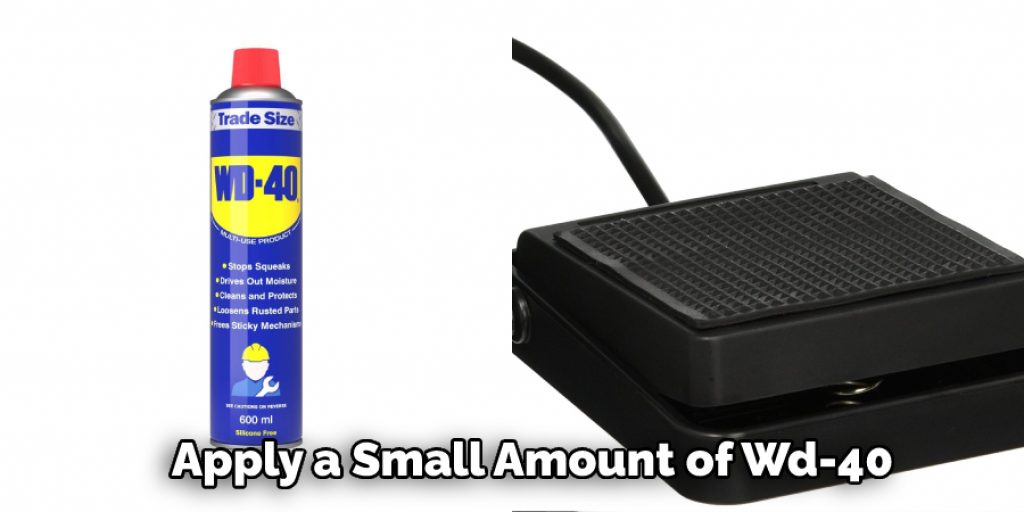
9. Replace the Pedal
If all of the above methods fail, your last option may be to replace the pedal. Unplug the old pedal from the piano and plug in the new pedal to do this. Make sure to match the colors of the connectors on the pedal and piano, so they are properly connected. How Do I Care for My Piano Pedals?
Caring for your piano pedals is just as important as caring for the rest of your piano. After all, these pedals are what help you to play with greater expression and control over the sound. Here are some tips on how to care for your piano pedals:
When cleaning your piano, make sure not to use any harsh chemicals or cleaners on the pedals.
10. Take the Piano to a Technician
If you cannot fix the sustain pedal on your own, you may need to take the piano to a technician. They will be able to fix the problem for you and make sure that the sustain pedal works properly. Pianos can be delicate instruments, and if not handled correctly, they can be damaged. Therefore, if you are not confident in your ability to fix the sustain pedal on your own, it is best to take it to a technician.
Some Helpful Tips and Suggestions
Here we have given some tips on how to fix sustain pedal on baby grand piano.
1. If the sustain pedal is not working on your baby grand piano, it might be because the connecting cable is loose. In this case, you can try to fix it by yourself by tightening the screws that hold the cable in place.
2. Another common problem with sustain pedals is that they tend to get stuck. You can usually free them up if this happens by gently wiggling the pedal back and forth.
3. If your sustain pedal is completely missing, you might be able to find a replacement at a music store or online. Just make sure to get the correct size and type for your piano.
4. If your sustain pedal is damaged or broken, you might need it repaired or replaced. Again, a professional piano technician can usually do this.
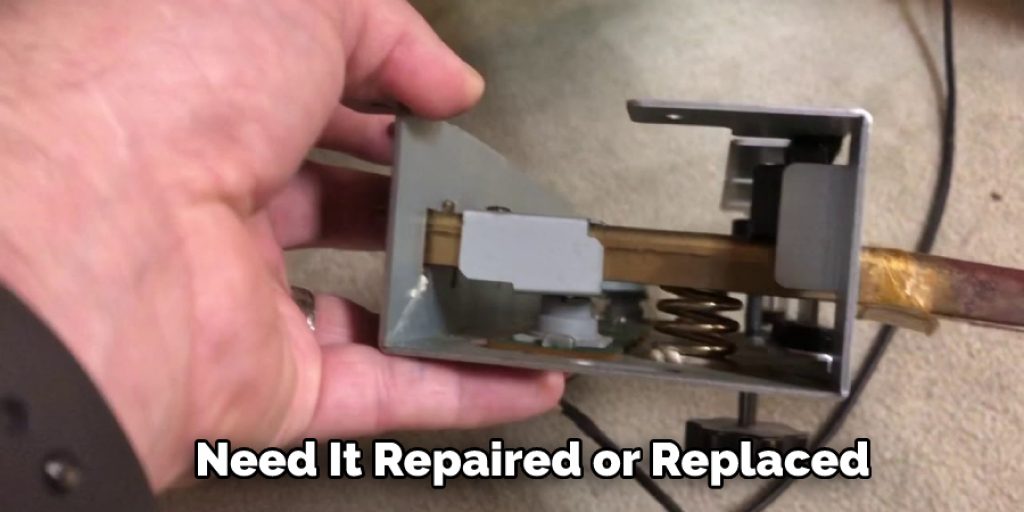
5. If you’re having trouble controlling the sustain pedal’s volume, you might try adjusting the piano’s damper pedal. This can usually be done by turning a knob or screw on the back of the piano.
6. Finally, if you’re still having trouble getting the most out of your sustain pedal, you might want to consult a piano technician for advice. They can help you adjust the pedal’s settings and find other ways to improve its performance.
How Sustain Pedal Produces Opposite Effect?
The sustain pedal on a baby grand piano is responsible for producing the opposite effect of the damper pedal. The damper pedal lifts all the dampers off the strings, whereas the sustain pedal keeps the dampers raised so that they continue to vibrate and produce sound after you release your finger from the key. This is why you can hold down a chord on the piano and release each key one at a time and still hear the chord ringing.
The sustain pedal is also responsible for creating the “pedal tones” that are often heard in classical music. By depressing the sustain pedal slightly and then playing a low note, you can create a long, sustained tone that will resonate throughout the entire instrument. You can also use the pedal to create a “sustain” effect on high notes by depressing the pedal just before you play the note. This will keep the string vibrating for a longer period, resulting in a richer, more mellow tone.
What are The Cable Lead Replacement Options for the Pedals?
There are three cable lead replacement options for the pedals: the standard option, the quick-release option, and the extended option.
The Standard Option
The standard pedal cable lead is 24″ long and has a 1/4″ mono phone plug and a 1/4″ mono phone jack on the other end.
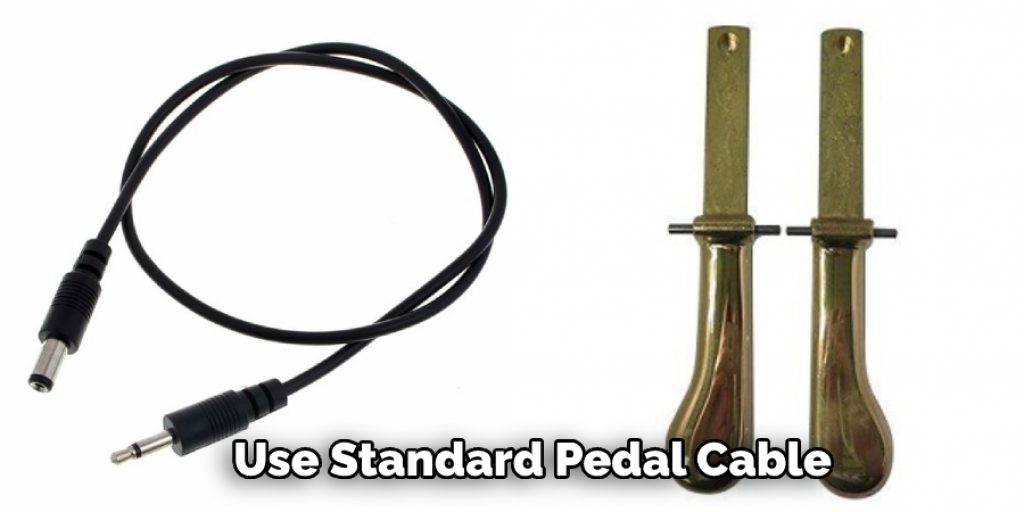
The Quick-Release Option
The quick-release pedal cable lead is 12″ long and has a 1/4″ mono phone plug and a 1/4″ mono jack on the other end. It features a quick-release connector that allows you to disconnect the cable from the pedal quickly and easily.
The Extended Option
The extended pedal cable lead is 36″ long and has a 1/4″ mono phone plug on one end and a 1/4″ mono jack on the other end. It features an extended connector that allows you to extend the cable length by 24″.
You Can Check It Out To Fix a Wobbly Cat Tree
Frequently Asked Questions
Do You Adjust the Sustain on a Grand Piano?
While it is possible to adjust the sustain on a grand piano, this is not typically done. The hammers that are used to play the notes produce sound when they hit the strings, and these vibrations are transmitted through the string board and into your hands. If you adjust the sustain too much, you may end up canceling out or muddying some of those original tones. In other words, it’s usually better to leave things totally untouched!
Can Piano Pedals Be Fixed?
the condition of your piano pedals will likely depend on a variety of factors including their age and construction. However, in general, pianos that are older or have been subjected to heavy use (such as live performances) may require more extensive repair work than younger or less-used pianos.
If you’re concerned about the condition of your pedals, it’s important to schedule an appointment with a professional technician like Andrew Tanabe at Piano Technicians Northwest LLC for a full assessment. In addition to evaluating the overall health and function of your pedal system, he can also recommend repairs or modifications if necessary.
What Does the Middle Pedal Do on a Grand Piano?
it can vary depending on the model of piano that you’re asking about. However, the middle pedal on a grand piano generally functions as a damper pedal. This pedal is used to dampen the strings so that they don’t sound too loud or too harsh when the pianist plays them.
When Should I Lift Piano Pedals?
Lifting piano pedals should be done slowly and with caution to avoid injuring yourself. It is important to warm up your hands and feet before lifting the pedal, as this will help reduce the risk of injury.
When you are ready to begin playing, place one foot on each pedal at its lowest position and gently lift them together until they reach their highest point. Remember not to apply too much pressure when moving the pedals; instead, allow your fingers and hands to do the work!
Do You Need 3 Pedals for Piano?
No, You Do Not Need 3 Pedals for the Piano! While it is true that you will need to use additional pedals if you want to play the piano using chords or harmonies, a standard set of pedals will suffice. The three main pedals used on the piano are the pedalboard (for bass and treble notes), sustain pedal (used to hold down a note while other keys are played), and the soft pedal (to mute individual strings).
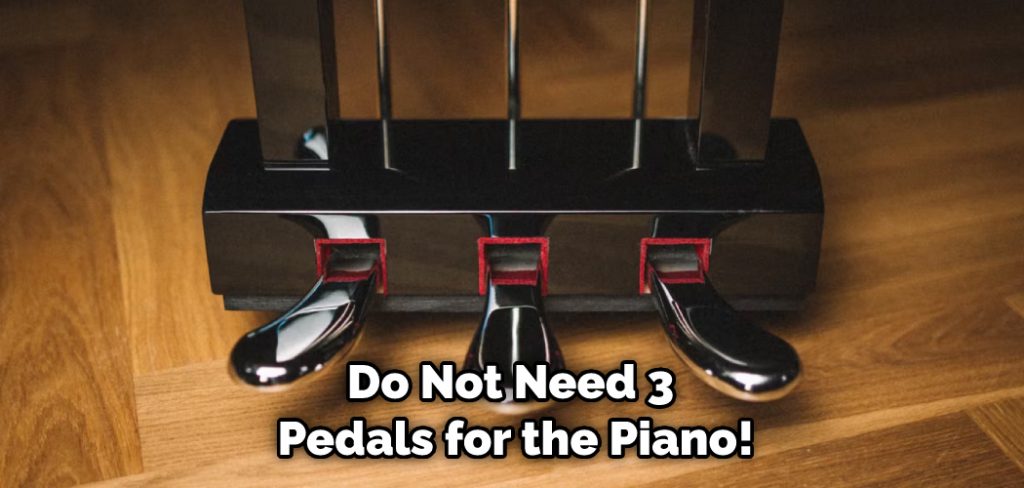
If you’re new to playing the piano, then it may be helpful to learn how these pedals work together before actually trying them out. This way, you can make sure that your fingers aren’t going too high or low when pressing down on certain keys.
Additionally, practice regularly so that your skills improve gradually over time. Eventually, with regular practice and patience, even beginners can achieve competent level performances!
Conclusion
The sustain pedal on a baby grand piano is located in the same spot as on an upright or grand piano. It is usually the rightmost pedal. The sustain pedal functions by holding down all of the other keys at once so that they will continue to sound even after you release your fingers from them. This gives the effect of the notes continuing to ring out for a longer period.
Fixing the sustain pedal on a baby grand piano is not an overly difficult process as long as you have the correct tools and are careful. By following these simple steps on how to fix sustain pedal on baby grand piano, you can save yourself a trip to the music store or, even worse, a broken pedal. Have you ever had to fix your sustain pedal? Let us know how it went in the comments below!
You Can Check It Out To Fix 4 Wheel Drive
